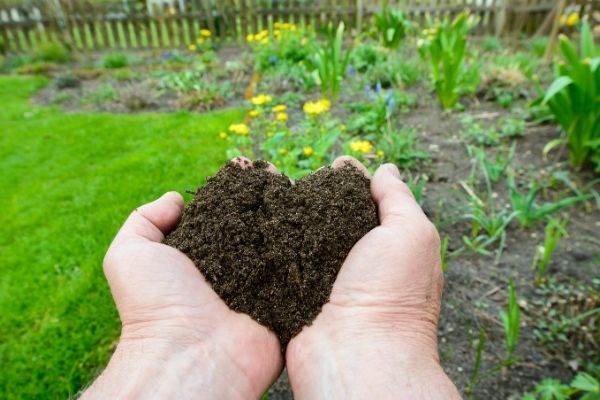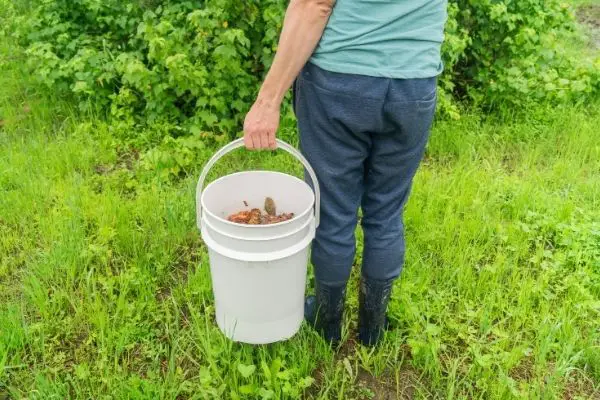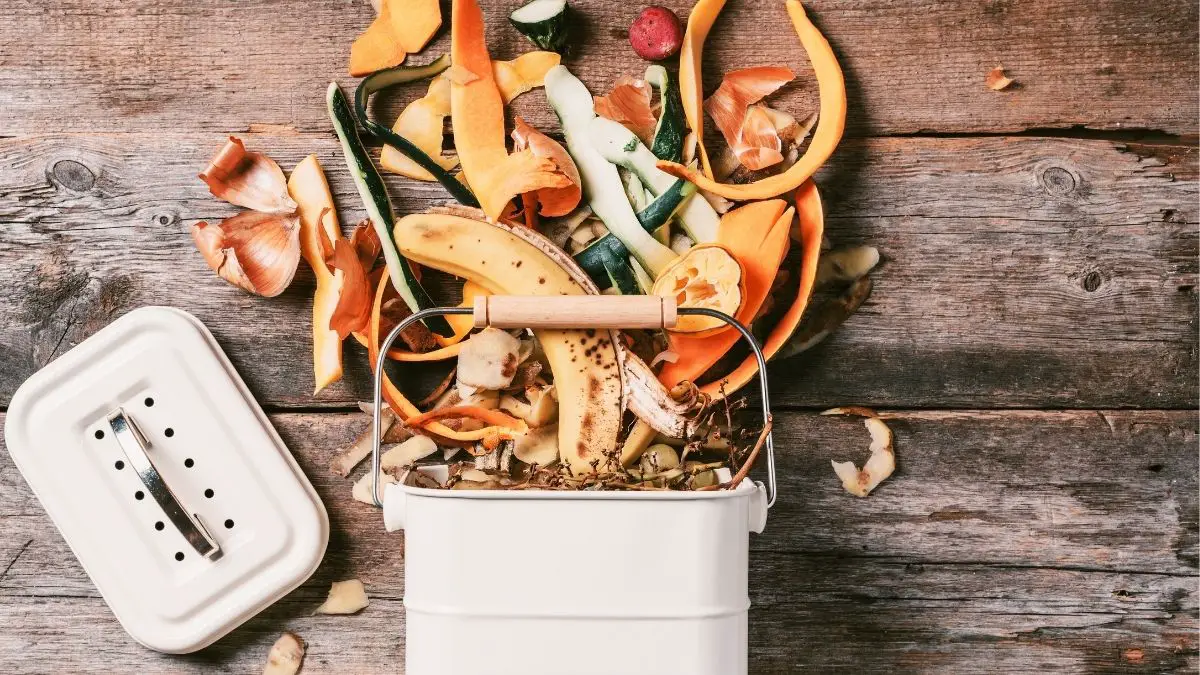What is Bokashi Composting? (Everything You Should Know!)
There are so many different types of composting that it can be hard to know where to start. But, if you’re looking for an option that’s low effort and quick, then Bokashi composting might be the right option for you. By the end of this article, you’ll know everything you need to start down the road of becoming a Bokashi master.
Bokashi Composting is a Japanese style of composting. It uses microorganisms and a fermentation process to quickly and efficiently breakdown almost all types of food waste.
How Does Bokashi Composting Work?
Bokashi composting relies on fermentation to kickstart the breakdown of food. This is done using microorganisms. In most cases, the microorganism of choice for Bokashi is Lactobacillus. In some pre-made mixes, you may find that there is also some yeast and some photoactive bacteria, but it’s really the lactobacilli that’s doing the heavy lifting.
Getting the fermentation process going is really easy. You just need some Bokashi, an airtight and drainable Bokashi bucket, and your food scraps. You start with a layer of Bokashi and then alternate layers of food scraps with layers of Bokashi.
The airtight buckets let the anaerobic process start, which breaks down the food scraps. The drain enables you to keep the mix reasonably dry, which keeps the food fermenting without allowing mold to grow.
If you’re ready to start your own Bokashi journey, check out our guide to the best bokashi buckets – for any budget!
Once your bucket is full, you can use the Bokashi compost straight away, or you can leave it to ferment until you’re ready to use it.
Using Bokashi compost is pretty straightforward. You just need to bury the compost in the ground. You dig a trench around 25 – 30cm deep, add your Bokashi compost, and then leave it to work. In established gardens, you put the Boskahi between the plants.
If you’re preparing the soil for new plants, it’s best to wait around two weeks before adding new plants. When Bokashi first goes into the ground, it’s a little acidic, and it can burn the roots of young plants.

If you have a traditional compost bin on the go already, then you do have the option of adding your Bokashi to your compost bin. There are pros and cons to both options. If you want to learn more about the difference, we have a great read about burying vs composting bokashi.
What is Bokashi Made of?
Bokashi is basically just an enriched organic material. It can be made of anything from a wide range of materials, from wheat bran to spent beer grains. This bran is then enriched by the addition of Lactobacillus.
You can buy all sorts of types of Bokashi for easy use in your home. If you can, a great option is to look for ones made from waste products, such as old beer grains or wheat mill run (WMR). Diverting these waste products is a great way to further reduce the amount of waste going to landfill.
If you want, you can make your own Bokashi. You can make the whole thing from scratch, or you can buy an enriched micro bacterial liquid to treat your organic material with. Both options make good projects, and once you get into the routine are pretty easy to maintain. The most significant difference in using a bought mix is that it saves you a couple of weeks of waiting time.
Is Bokashi Composting Really Composting?
Composting is the process of breaking down organic material into simple decayed matter. If you’ve tried traditional composting, then you know that the food you put in ends up looking very different by the time it comes out the other end. This isn’t going to happen in your Bokashi bin. With Bokashi, food scraps are going to look pretty much the same when you get them out!
The process happening inside your Bokashi bin is fermentation. This means that there is a chemical reaction happening inside the food. The bacteria are converting the chemicals in the food into smaller, more easily broken down ones. The process only goes so far. It won’t break food down all the way as a hot compost bin does.
But, because the food has been essentially pickled, it means that when you put your Bokashi compost into the ground, it breaks down much more quickly than it otherwise would have. It also turns food items that wouldn’t quickly decompose into things that can.
So, the process that’s happening inside your Bokashi Bin isn’t composting. It’s a first step that speeds up the process once the food scraps leave the bin. But, around 4-5 weeks after you put your Bokashi treated food scraps in the ground, they will have fully composted.
What Can be Put in Bokashi?
The great thing about Bokashi is that you can put almost any food waste into it. Things that you would typically need to avoid in hot compost or worm compost systems can all go straight into your bokashi bin!

This means you can add cooked food, meat, eggs, dairy, fruit, vegetables, and coffee grounds. At the end of a meal, you can just scrape any leftover food straight into your Bokashi bin.
What CANNOT Go in Bokashi?
There are really only three types of food waste to avoid putting in a Bokashi Composter.
First on the list is large food items. It’s best to cut up larger things so that they break down more quickly. For instance, if you have some potatoes that have rooted, you’ll need to cut them up before they go in your bokashi bin.
Secondly, you shouldn’t add any food that has already started to go moldy. The mold on the food can compete with the microorganisms in your Bokashi. This can result in you grow mold instead of fermenting the food, which is the aim of bokashi composting.
Finally, avoid adding too much liquid to your Bokashi. Large amounts of fluid can make the whole mix too wet. This can promote the growth of the wrong sort of organisms. So it’s best to let items like tea bags dry out before you add them to the bucket and avoid adding fruit juice or tea.
Is Bokashi Better than Composting?
Bokashi has some significant advantages over composting. Here are a few that top the list.
- The airtight lid means there are no bad smells, and you can keep it in your kitchen for easy use.
- You can add pretty much any food to the bin, so it’s easy to get the whole family on board.
- Much less food waste will end up going to landfill.
As with all things in life, it’s not all upsides. The biggest downside to Bokashi is that you have to dig holes to bury the Bokashi. You can’t just leave it on the top of your soil. So, unless you really like digging, that part can be a chore.

A traditional compost pile is a much better option for people who want to recycle their garden waste. It can take your old leaves and weeds and turn them into nutritious compost for your garden.
Ultimately if you want to get the best of both worlds, you don’t have to choose between burying your Bokashi or having compost. You can combine Bokashi with traditional composting to suit your needs.
Does Bokashi Smell?
While the lid is on your bucket, there won’t be any smell at all. Bokashi bins are airtight to let the anaerobic bacteria do their work.
If your Bokashi bin is working, you should detect a distinctive smell when you take the lid off. It should smell a little like pickles or cider vinegar. How you feel about the smell is pretty individual. Personally, I don’t mind it at all, my husband, on the other hand, isn’t too keen. But because the lid is off and on quickly, it’s really not a big deal.
Final Thoughts: Should You Start Your Own Bokashi?
If you are looking to reduce the amount of food you send to landfill, Bokashi is a great solution. Since around 40% of the waste in US landfills is composed of food waste, it would undoubtedly be a positive change. You can combine Bokashi with a traditional compost pile or use it on it’s own to create fertilizer for your garden. It’s the kind of thing that fits into family life easily because the rules are simple, and it’s tough to mess it up.
Frequently Asked Questions
What Can and Can’t Go in a Bokashi Bucket
Can you put cooked food in Bokashi?
Cooked food is absolutely fine to go in Bokashi composters.
Can you put bread in Bokashi?
Bread is a great food to put into your Bokashi composter. It ferments quite easily.
Can you put coffee grounds in your Bokashi bin?
Yes, you absolutely can.
Can Citrus go in Bokashi?

The great thing about Bokashi is that you can put every part of citrus fruits into the bin, there’s no need to weed them out.
Can chicken bones go in Bokashi?
Any sort of bone can go in Bokashi. The bacteria and the fermentation process can kill off any harmful pathogens lurking in the bones. The only thing to be aware of is that if you put the bones into your soil, they will take a long time to break down. You might find them while digging for years to come.
Can you put mouldy food in Bokashi?
It’s best to avoid putting moldy food in Bokashi Composters. The mold on the food can disrupt the fermentation process. If a small amount goes in by accident, it’s not the end of the world, but you should avoid adding large amounts of moldy food.
Can you put paper in Bokashi?
You can put small amounts of paper in a Bokashi bin. It’s best not to put too much in as it is harder to break down. You would be better off putting it into your paper recycling bin.
Can you put compostable bags is Bokashi?
The thing about compostable bags is that they are designed to decompose under industrial composting conditions. So if you put them in your garden, they will take a long time to break down.
Can you put hair in Bokashi bin?
Hair is basically just organic matter, so it can go into your Bokashi bin with no problem. It is best to break it up and spread it around rather than just putting it in, in one big clump.
Beginner Bokashi Questions
How do I start a Bokashi bin?
To get started with a Bokashi bin, you first need a container for it. The best Bokashi buckets have taps so that you can easily drain off the liquid that collects. But if you really want you can quite easily make your own bin.
Once you have your Bokashi container, all you need to do is lay down a good layer of your Bokashi bran. Once you have a good covering on the bottom of your container, you’re good to go.
Why does my Bokashi smell?
If your Bokashi has a foul odor, it’s an indication that something has gone wrong. When you can smell the bin even with the lid on, it suggests a leak in your bin. If it’s not airtight, then the food will be decaying rather than fermenting.
If you only get the bad smell when you take the lid off, then it suggests that you might have a moisture problem. You can try draining your bin more frequently, adding more Bokashi when you add food, or taking a moment to compress the bin’s contents when you add new food scraps.
If your Bokashi does go bad, you can try adding some sugar to the bin. This can kick start the bacteria. Unfortunately, if sugar doesn’t work, the best thing to do is dump the whole lot, clean out the bin and start again.
How long does it take to fill a Bokashi bin?
It depends on the bin’s size, family, and how much food waste you have. As a general guideline, a small family will usually fill an average Bokashi bin in about 2 weeks.
Can you keep a Bokashi bin outside?
The fermentation process that’s happening inside your Bokashi bin is a biological one. That means it will be affected by the temperature. If it’s cold outside, then it can slow or stop the process. If it’s warm, then it’s no problem at all. It can be an excellent idea to let your Bokashi get started indoors and then let it finish outside if it’s cold.
Does Bokashi kill seeds?
Bokashi is quite acidic when it first goes into the soil. It can kill the roots of young plants. So if you plan to plant some seeds in your enriched soil, it’s best to wait a couple of weeks before doing so. This will allow the pH to rebalance a little.
Filling Your Bokashi Bucket

What do you do when your Bokashi bin is full?
When your Bokashi bin is full, you have a couple of options.
If you can, it’s a good idea to leave your Bokashi bin to continue fermenting for another week or two. If you only have one bin, you can just move onto the next steps. The top food items will just be less broken down than the rest.
You can put the Bokashi compost straight into the soil. You do this by digging a trench about 20cm down, filling it with your fermented food scraps, and just covering it over.
Another option is to add the contents of your Bokashi bin to your compost pile or even to feed it to your worms if you have a worm farm.
Check out our guide to burying vs composting Bokashi for more details.
How do you know when Bokashi is ready?
Your Bokashi will be ready in around 2 weeks. There won’t be much visual change as fermentation is a chemical process. However, promising signs are a white moldy growth on the top of your food waste, and the smell is sour but not foul. It should smell a little like pickles or vinegar.
What is Bokashi tea?
Bokashi tea is the name for the liquid that you drain from your Bokashi bin. The liquid is a really concentrated fertilizer. You can dilute it at a ratio of around 100:1 with 100 parts water and then use it to feed your house or garden plants’ soil. It’s best not to put it on the foliage as it is still acidic.
You can also put the Bokashi tea down your household drains. This is actually a pretty good use of it. The good bacteria from your Bokashi bin can help to clean your drains and your community waterways. lactobacilli, and the lactic acid it produces, is surprisingly effective at neutralizing many different pathogens.
How long does Bokashi tea last?
Bokashi tea is best used on the same day you drain it from the bin. After that, it loses many of its nutrients.
Disposing of Bokashi
How do you dispose of Bokashi?
If you have more Bokashi than you can use in your garden, you have a few options. If your local authority does a green waste collection, you may be able to put it in there. It might seem like there’s no advantage to having put it through your Bokashi bin, but there is. Your Bokashi waste will biodegrade much faster than it would otherwise do.
How do you bury Bokashi waste?
It’s best to bury Bokashi waste by digging a trench around 20-30cm deep. The best spots are between plants and trees or in fallow areas of your garden. You just lay the waste in the trench and then cover it over with soil.
How do you use Bokashi compost in the garden?

You can use Bokashi compost directly in the soil by burying it. You can mix it in with your hot compost. Or you can use it to feed your worm farm.
How long does Bokashi take to decompose?
The longer you leave your Bokashi to ferment, the faster it will decompose. If you left it for around 2 weeks, you could expect it to decompose in approximately 4 weeks.
Can Bokashi be put in your compost bin?
Bokashi can absolutely go into your compost bin. It’s an excellent place for it to continue to decompose. It will also decompose much faster as a result of having been fermented.
Can you put Bokashi in your worm farm?
You can use Bokashi in a worm farm. However, as it is acidic, you may need to introduce it slowly so that it’s not a shock to their systems. After a few weeks of use, you should be able to feed them your Bokashi scraps regularly.
Do worms like Bokashi?
Given that Bokashi is acidic, it’s reasonable to assume that worms might not like it. However, it turns out that once they are used to it, they will devour all the food scraps that you put in your Bokashi bin.
Do rats like Bokashi?
It’s often a good idea to avoid using Bokashi in compost piles, especially meat and dairy because they are so attractive to scavengers like rats. However, the fermentation changes the smell of the food so much that it is no longer appealing to rats. Most will completely ignore it.






